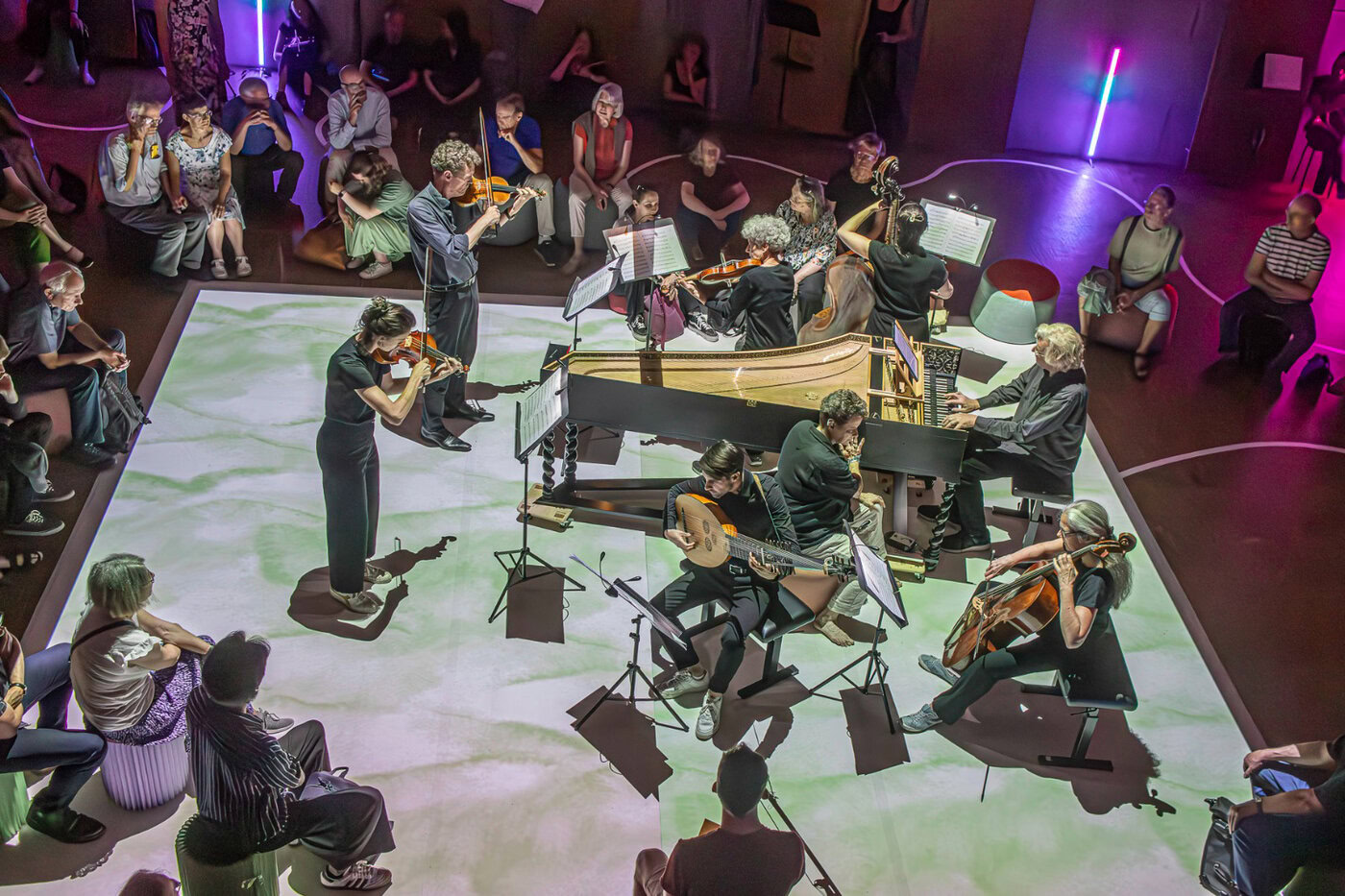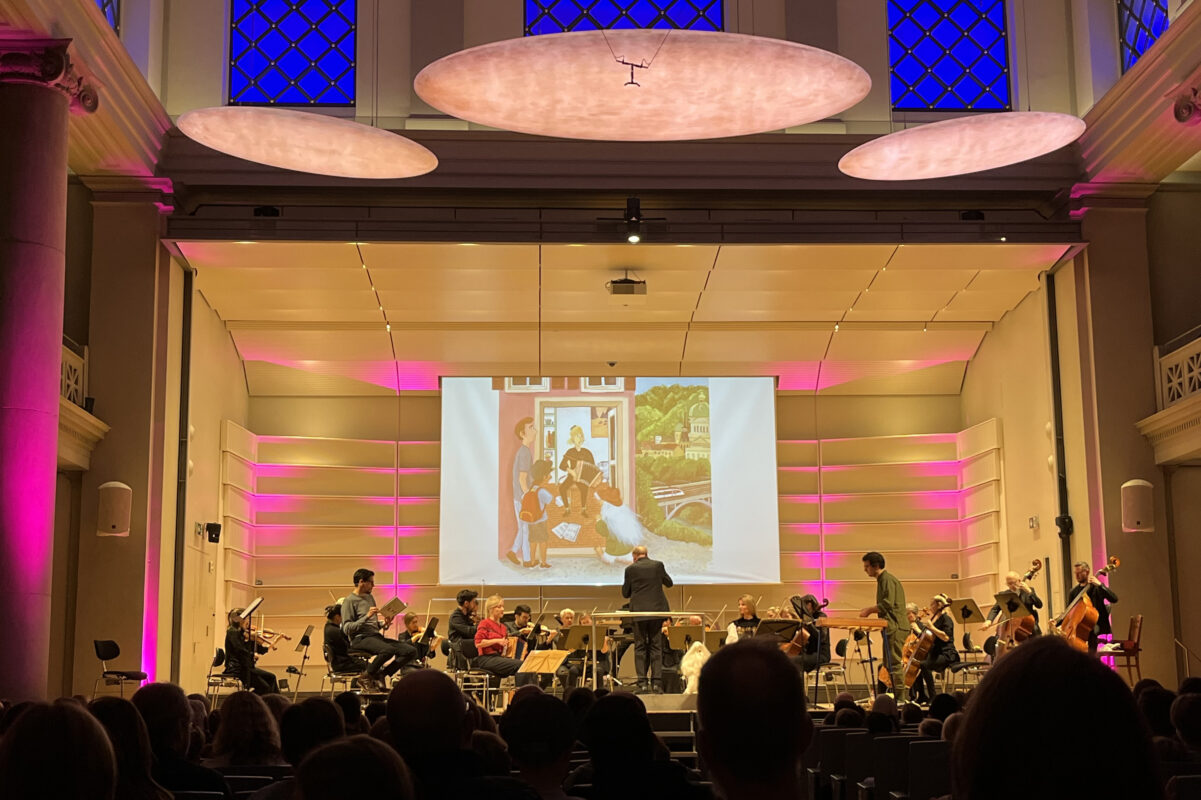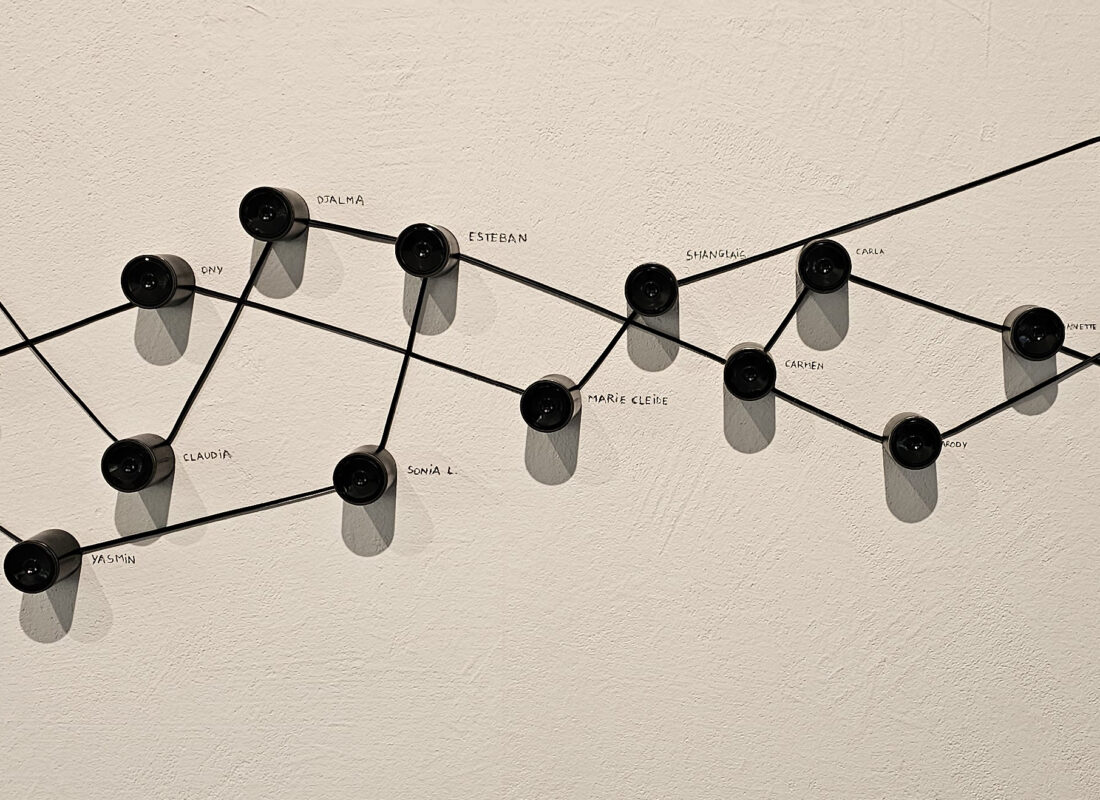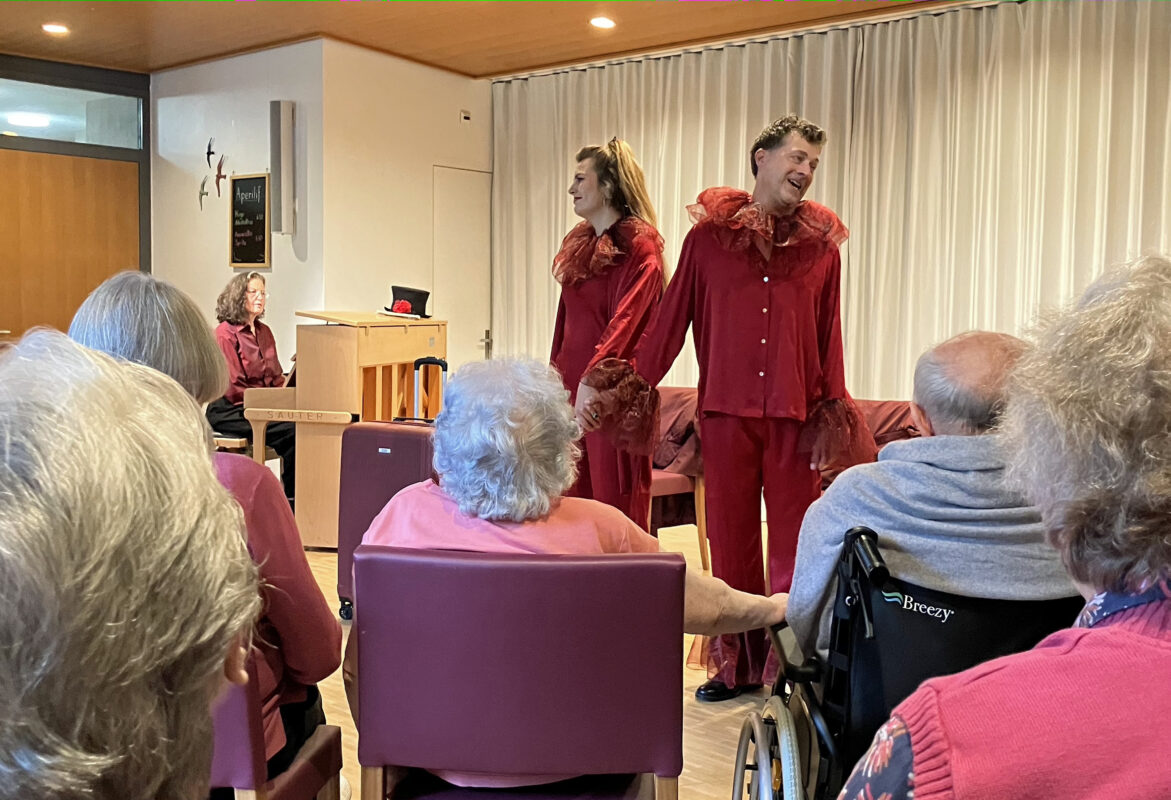In concert with hearing impairment
The Freiburg Baroque Orchestra brings the audience up close for an experience with all the senses. Together with the local Institute for Musicians' Medicine, it also wants to find out how listening to music affects our well-being.

Sitting between cello and lute, Ulrike Berger touches the harpsichord to perceive the sound vibrations. Photo: Frank S. FischerThe first drumbeat in the semi-darkness goes through your bones. The dissonances of the strings and harpsichord are harassing, the piccolo flutes frightening. Reading Éléments by Jean-Féry Rebel begins with "Le cahos". Music as an elemental force - to be experienced with the whole body. Composed chaos that stirs things up. The Fribourg Baroque Orchestra is known for its vivid, tonally sharpened interpretations. But on this Sunday afternoon in Freiburg's Ensemblehaus, the effect of this music is even more powerful.
The audience sits in the middle and is surrounded by the orchestra. Each visitor can place their stool wherever they like (set: Fenia Garbe) and change their seat during the concert. The musicians also change position between works. The trumpeters sometimes play from behind, sometimes from the front. The violins are first very close, then far away. The otherwise quiet, barely perceptible sound of the lute is a real revelation due to the short listening distance. The concert also becomes a special visual experience due to the proximity. You can see the sound production: the tense facial muscles of the wind players, the bow strokes and the mallets that cause the timpani head to vibrate.
"Hearing Together" is the name of the joint project of the Freiburg Baroque Orchestra and the Freiburg Institute for Musicians' Medicine (FIM), which is supported by the University of Music and the University Hospital. The project, which receives federal funding, aims to better integrate people with hearing impairments into concert life. "We are interested in what significance a hearing impairment has for concert attendance, for the perception of music and the enjoyment of listening," says Claudia Spahn, who heads the FIM together with ENT specialist Bernhard Richter. In the detailed audience survey in the fall, however, they also want to get answers from people without hearing impairments in order to find out how listening to music generally affects their well-being. After the precise data analysis, the third step will be a special concert on March 23, 2026 in the Konzerthaus, the design of which will incorporate the findings obtained.
On the seat cushion between lute and cello
Hans-Georg Kaiser, Director of the Freiburg Baroque Orchestra, cannot explain why the target group of the format, i.e. people with hearing impairments, was largely absent from the third concert attended. "Perhaps this is due to the taboo surrounding the subject in society. Or the unusual location for our subscription audience." With live visuals (Sebastian Rieker) and subtle choreography (Friederike Rademann), the concert offers additional stimuli that could also give people with hearing aids a more intense musical experience. That is beyond question for Kaiser. Above all, it is inclusive because it allows people who would otherwise not be able to listen to music at all to have a sensory experience.
One of them is Ulrike Berger, who wears a hearing prosthesis for the deaf and hard of hearing, a cochlear implant. Cochlea in this context means cochlea. Berger was approached directly by project manager Andreas Heideker. Like six other people with cochlear implants, she had made her way to the Ensemblehaus the day before. "We were all totally touched. I myself had taken off my shoes and could feel the vibrations on the floor, but the seat cushion also transmitted them." The managing director of the German Cochlear Implant Society (DCIG) has not heard a concert for years because music sounds distorted due to electrical hearing. 22 channels cannot replace the missing 10,000 auditory sensory cells.
During the concert, Berger sat down between the lute and cello. "As I was able to concentrate on these two instruments, I heard the melodies very well. And through my hand on the harpsichord, I perceived the sound vibrations. So the harmony and therefore the music itself resonated wonderfully with me."
Georg Philipp Telemann's overture La BourlesqueJean Philippe Rameau's suite from Les Boréades and Jean-Michel Delalande's trumpet concerto (solo: Jaroslav Rouček, Karel Mňuk) becomes a special listening experience thanks to the spatial sound. Concertmaster Gottfried von der Goltz moves a little more than usual in order to take the musicians behind him with him. The motifs wander through the room and the ensemble playing is excellent despite the unusual set-up. "Different is always good," says von der Goltz in conversation after the concert. "The proximity of the audience was also special for us. Being right in the middle of the hustle and bustle and not standing at a distance on a stage - that invigorates our playing."








